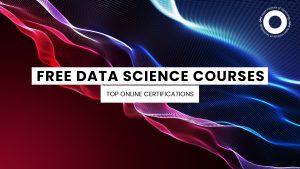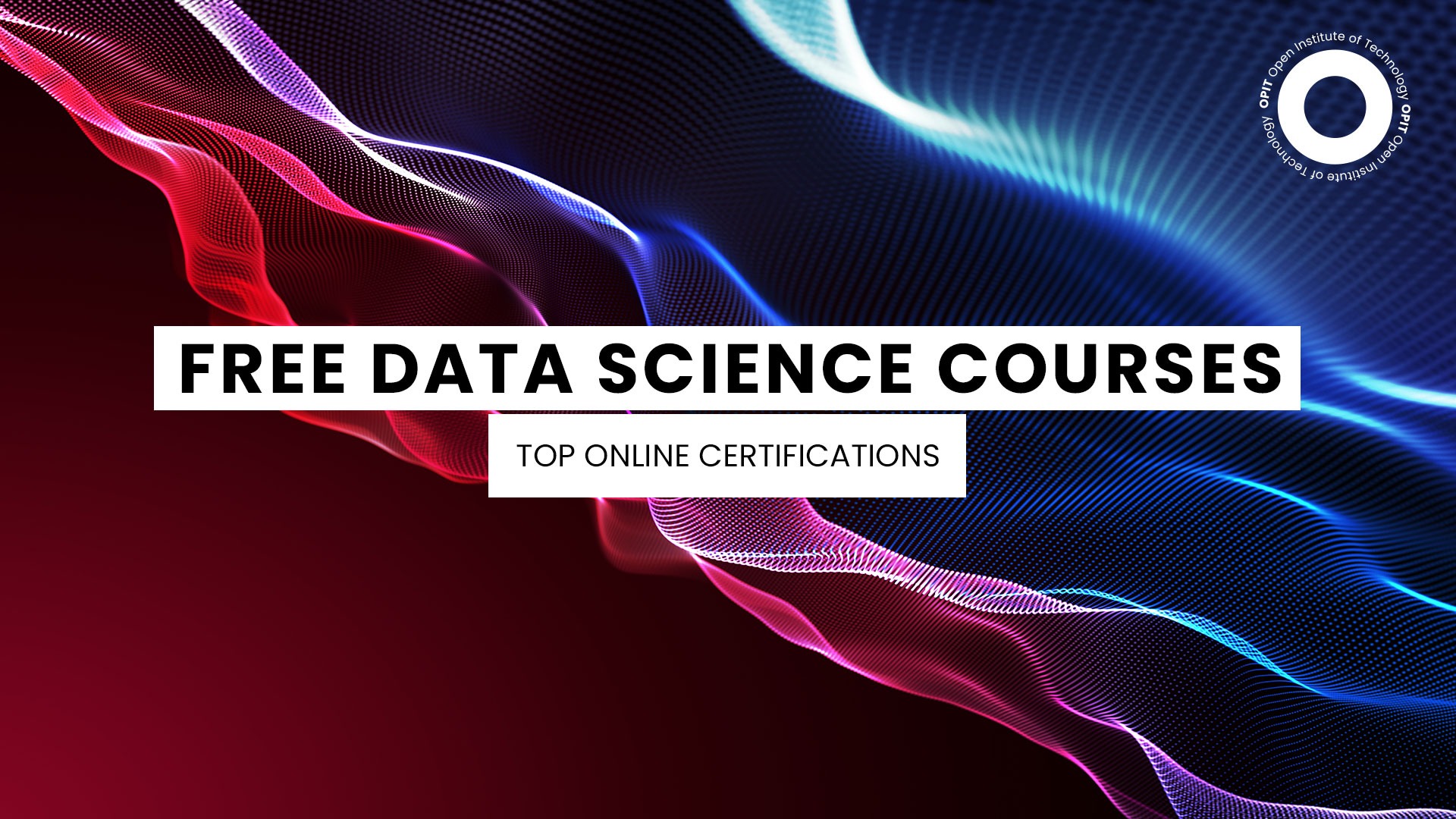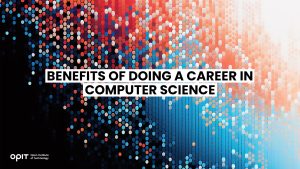

In a world of Big Data, companies need people who have the ability to analyze and reach conclusions from the reams of data they collect about customers. But data science extends far beyond the corporate. Any industry that uses data (i.e., practically all of them) needs data-minded people who can use the latest AI-driven tools to help them scour large datasets.
That’s where you come in. As a potential data scientist, you’ll enter an industry that’s experiencing enormous growth to the point where it will be worth $103 billion (approx. €96.37 billion) by 2027. That market growth translates into demand for talented data scientists, which is already seen today as Coresignal’s data – 8,000 available job postings across eight leading positions in the first five months of 2022 alone – demonstrates.
So, the benefits of earning a free data science certification are obvious – you’re entering a growing industry with huge demand that leads to a better salary. But you need to know which courses will help you break into that industry. This article highlights four of the best free data science courses around.
Top Four Free Data Science Courses
As wonderful as the word “free” may be to budget-conscious students, you still need to know that you’re getting something of value from your data science course. The following options deliver a stellar educational experience and leave you with a qualification that employers recognize.
An Introduction to Data Science (Udemy)
Every journey starts with a first step, and it’s crucial that you take the first step into data science with a course that covers the basics and lays a foundation on which you can build. An Introduction to Data Science does just that by teaching you what data science is and how it applies to the modern world.
That teaching starts with a history lesson that shows how interactions with data (and data collection methods) have evolved over the years. From there, you’ll learn how data science applies in modern industry and discover the difference between actual valuable data and the oodles of “noise” that are in datasets.
It’s a quick and easy course, weighing in at 43 minutes spread across six video lectures, so you don’t have to make a huge time commitment. It’s delivered online by a Google Certified Python Expert named Kumar Rajmani Bapat and is ideal for getting the basics of data science down before you move on to a more intensive or focused course.
But the focus on the basics is also the biggest issue with this course. Rather than showing you the techniques a data scientist uses, the course focuses on what data science is and offers a roadmap for getting into the industry. It’s more about “what” than “how,” which may make the course too rudimentary for people who already have some knowledge of the subject. It’s also worth noting that this isn’t one of those free data science courses with certificate, as you’ll need to pay for an Udemy subscription to get your hands on a certificate of completion. You can still watch the videos and complete the course for free, though.
Introduction to Data Science (SkillUP)
With a similar name to the above Udemy course, you’d be forgiven for assuming that SkillUP’s Introduction to Data Science program teaches the same stuff. Though the course is aimed squarely at beginners, it takes a more in-depth approach that makes it the ideal follow-up to Udemy’s offering.
You start with the basic spiel about what data science is and how it applies to modern industry. But from there, the course tips into actual application by demonstrating some of the best Python programming libraries to use in the field. You’ll also dig deep into the algorithms used in data science, with linear regression analysis, confusion matrices, and logistic regression all getting some time to shine.
Given this higher focus on the skills you’ll need to learn to become a data scientist, the course is longer than Udemy’s offering. It clocks in at seven hours of videos and tutorials, all of which you access online and work through at your own pace. The course also expects you to have a solid grasp of math and programming (some experience with Python is a must) so this isn’t ideal for complete beginners to computer science.
This is a data science free online course with certificate, though there is a caveat. SkillUP only provides 90 days of free access to the course. If you feel it will take longer than that to get through the seven hours of tutorials, you’ll need to enroll in a paid subscription. The best approach here is to only start the course when you’re confident that you can block out the time needed to wrap it up within 90 days.
IBM Data Science Professional Certificate (Coursera)
Aimed squarely at the career-focused individual, IBM’s data science course is all about building the skills that set you on the right path to a career in the field. It takes a more practical approach, starting you off with the fundamentals before pushing you into a project where you’ll work with a real-world dataset and publish a report that’s analyzed by stakeholders simulating what you’ll experience in the working world.
The good news is that you don’t need to know anything about data science to get started with the course. It holds your hand as you learn the basics of what data science is (including what a data scientist actually does) and teaches you about the tools and programming languages you’ll use in the field. Once you have a grasp on the fundamentals, you’ll learn how to analyze and visualize data, in addition to creating machine learning models using Python, before wrapping up with the previously mentioned project.
The IBM Data Science Professional Certificate is a more intensive course than the others on this list. It’s essentially a mini degree, requiring you to invest 10 hours per week for five months into your learning. However, the course is provided entirely online, allowing you to schedule that learning time as you see fit. You’ll work through 10 modules as part of the certificate.
That time commitment may be a downside for those who can’t put 10 hours per week into a course, though that downside is outweighed heavily by the fact that you come out with an IBM certification. Having one of the leading names in computing on your certificate is enough to make any employer sit up and take notice.
Data Analysis With Python (freeCodeCamp)
The Python programming language (along with SQL and a few others) underpins almost everything that the modern data scientist does. Data Analysis with Python takes that concept and runs with it by providing a course that digs into using Python to read, analyze, and visualize data.
Along the way, you’ll learn about the basics of both Python and data analysis, though the real highlight comes from the many libraries and tools the course introduces. You’ll use Seaborn, Numpy, Mayplotlib, and Pandas during the course. All of which are libraries used by professionals to extract and visualize data. The course wraps up with a series of five projects, each testing a different set of skills learned via the modules, with your certification coming after you’ve completed all five.
This is one of those free data science courses that’s entirely self-paced and there are no time constraints or commitments involved. Once you’ve signed up for freeCodeCamp, you can save your progress through the course at any point and return whenever you’re ready. Theoretically, this means you could start the course, save your progress, and then return to it months later, though that isn’t recommended if you want to keep the information fresh in your mind. All told, the course contains 37 modules, plus the five projects required for certification, making it one of the most in-depth Python courses around.
The focus on Python is great for those who are unfamiliar with the language, though it also creates some issues. Namely, this isn’t the right course for those who don’t understand data science fundamentals. It jumps straight into analyzing datasets using Python, so those who don’t really understand what datasets are or how they apply to the modern world should start with a more beginner-oriented course.
Tips for Choosing the Right Data Science Course
You get the same benefit from all of the listed data science online courses – free entry. But each course offers something different. Use these tips to determine which is the right choice for you:
- Assess your current skill level to pick a course that delivers what you need to know right now rather than a course that forces you to run before you can walk.
- Determine your learning goals so you can see how the course fits into your roadmap for becoming a data scientist.
- Consider the course’s format and duration as both will play a huge role in how you schedule your learning around your other commitments, be they work-related or personal.
- Look for courses that offer hands-on project work once you’ve moved beyond learning the basics of data science.
- Read reviews and testimonials from other students to see if people in your position get actual value from the course.
Start Your Journey With Free Data Science Courses Online
Every journey starts with a first step, and that first step could take you into a career that has massive potential for growth if you opt for the data science path. The four courses listed here each offer something different, from exploring the basics of what data science is to digging deep into the programming tools you’ll use to conduct data analysis and visualization. Completing one of the four sets you on the right path, though completing all four gives you a solid grounding (and a set of certifications) that make you immensely attractive to employers.
Related posts

Life is unpredictable. While many of us have specific hopes and expectations of how our futures will turn out, things don’t always go as expected. There are many variables and unexpected incidents that can interfere and force you to alter your plans, and this is particularly true when it comes to education.
For instance, you might have had plans to study a specific subject, but had to deviate from those plans due to unforeseen circumstances. Or you may have had to enter the workforce in an occupation different from the one you sought in an effort to earn an income, a move that may not provide you with the time or opportunity to achieve your desired educational aims.
In short, every individual’s career pathway is different, and very few go exactly as we expect from the outset. Fortunately, even if you experience a few false starts or sudden twists in your pathway, there are always options available to help you get back on track.
The Unpredictable Nature of Education
In theory, the educational process seems simple. You select a course of study that interests you from the vast array of subjects and prospective professions, select the appropriate classes, acquire the knowledge and skills you need to succeed, and then embark on your profession.
In reality, however, as many people know from firsthand experience, the road to education is often far from straightforward. Here are just some of the many challenges that can take your educational path in a completely different direction:
- Life’s Curveballs: As touched on in the introduction, life is impossible to predict. Financial hardships, health issues, and family emergencies are just some of the unfortunate occurrences that might derail even the most perfectly planned educational regime.
- Changing Interests: People’s desires and preferences don’t necessarily stay the same throughout their entire lives. As you grow, learn, and have new experiences, your interests may change, and so, too, may your educational objectives.
- Pressure and Burnout: Some academic paths are particularly challenging, demanding intense levels of study and hard work. This can sometimes prove too much to bear, even for the most resilient students.
- Failures and Setbacks: Conventional education largely builds around tests and examinations, requiring students to demonstrate their competencies repeatedly. It’s a system that doesn’t suit everyone, and test failures can lead to setbacks and delays.
- Inequality: People can be born with very different privileges and levels of access to education. Those in certain parts of the world may find it much more challenging to complete their education path for financial, cultural, or even political reasons.
- Late Bloomers: People develop at different paces. Some may struggle educationally early on in their lives, forcing them to make certain concessions or sacrifices related to their studies, only to find their feet later in life once they’ve entered the world of work.
Whether you’re a late bloomer, have had your educational aspirations delayed by personal problems, desire to learn new skills and try something different, or want to begin a fresh chapter in your professional life, the Open Institute of Technology (OPIT) may be able to help.
Introducing OPIT
OPIT is an online teaching platform, making high-level technological educational programs accessible to all, no matter their age or background. Offering education in fields like computer science, artificial intelligence, and digital business, OPIT provides a curated collection of degrees. In addition, they offer classes taught by world-leading tutors imparting the wisdom and skills students need to achieve their goals and become the tech leaders of tomorrow.
Meanwhile, for those who have had somewhat tumultuous or unpredictable educational paths, OPIT offers the perfect course corrector: the OPIT Foundation Year.
The OPIT Foundation Year
OPIT’s Foundation Year is a Pre-Tertiary Certificate in Information Technology, fully aligned with MQF/EQF Level 4 standards and valued at 60 ECTS credits. Lasting just one year, this program essentially serves as a comprehensive yet accessible springboard towards higher-level education, creating a path towards degrees and careers in dynamic, flexible fields, like computer science and digital business.
Like other OPIT programs, the Foundation Year is delivered entirely online via the OPIT Virtual Learning Environment. Combining live lectures, asynchronous content, and interactive assessments, students enjoy diverse and dynamic study experiences, acquiring core skills like academic writing, mathematics, and computer literacy, and building a bedrock of knowledge and confidence before taking their next steps.
Who Is the Foundation Program For?
The Foundation Program is designed to provide a solid base upon which to build the technological education many students need. It’s the perfect choice for those who are eager and ambitious to enter professions in AI, data science, and computing, but don’t feel that they have the necessary core skills and knowledge needed to dive straight into a degree.
Entry requirements are relatively relaxed in order to allow as many students as possible to enjoy the benefits of this program. With that said, applicants should ideally hold an MQF/EQF Level 3 or equivalent qualification, with the intention of pursuing a bachelor’s degree. A minimum of B2 level of English proficiency is also required, as this is the working and studying language of the institution.
What the Foundation Year Provides
Perhaps you’ve recently graduated, are considering a career change, or finally have the opportunity to return to education after initial delays or unexpected disruptions to your original plans. Either way, the Foundation Year can help you enjoy:
- Greater Self-Confidence: Foundation Year graduates gain the fundamental skills they need to enter degree programs with much more self-belief and assuredness.
- Superior Tech Knowledge: Lasting two terms, this course explores mathematics, academic reading and writing, and provides an introduction to computer hardware and software.
- Foundational Mathematics: Mathematics literacy forms a large part of the study focus for the Foundation Year, helping students feel more comfortable with numbers and formulas.
- Flexible Learning: Unlike more rigid, conventional education environments, OPIT gives you the freedom and flexibility to study at a pace that suits you best, all from the comfort of home.
- Global Community: OPIT is an international institution, with staff and students from all around the world eager to share knowledge, exchange ideas, and help one another.
Take Your Next Steps to Success With the OPIT Foundation Year
If you’re curious about a career in technology or have always wanted to work with AI, data, and computers, but struggled to find the time and opportunities you need to acquire relevant skills and knowledge, the Foundation Program was made for people like you.
It’s the ideal entry point into the exciting world of online education, and the perfect first step towards a prestigious degree from an innovative and increasingly successful institution. Download the brochure to learn more about it, or start your online application, today.

Students today have a broader range of fields of study to choose from than ever before, but with the world becoming increasingly technological and computers increasing in influence and importance, pursuing a career in computer science often proves a smart, strategic choice.
There are numerous benefits and career paths associated with studying and working in computer science, and we’ll be listing just a few of them in this guide.
High Average Salaries
With the rising cost of living in many parts of the world, it’s unsurprising that many students are thinking several decades ahead to determine what level of starting salaries they could obtain in different career fields.
Many are also seeking professions that offer the opportunity for growth and the ability to advance up the ranks over time, thus increasing their salary and their quality of life in the process.
If a strong, stable salary with the opportunity for improved income is one of your top career priorities, computer science should be at or near the top of your list of prospective careers.
According to recent data, computer scientists earn an average of over €65,000 per year, with certain jobs, like IT project leader and data scientist, paying ever higher. Starting salaries are strong, too, with graduates earning anywhere from €46,000 to €60,000, depending on their chosen profession and level of qualifications.
There are similarly high average salaries reported around the world in computer science and related fields such as data science and AI/ML engineering. These numbers are projected to increase in the years to come, pointing to computer science as a way for graduates to get off to the best financial start of any career.
Unrivaled Flexibility
A common problem with some subjects and courses is that they only provide graduates with a narrow set of skills and a similarly narrow range of potential professions to which they can apply those skills.
That’s not the case with computer science. Graduates in this field can enjoy instant access to a remarkably diverse array of career opportunities, with even newer opportunities being created all the time as technology evolves and innovations emerge.
A few of the many industries and roles you might choose to enter in the field of computer science include:
- Healthcare: As a software developer, data analyst, or cybersecurity expert
- Finance: As a fintech engineer, blockchain developer, or security analyst
- Media: As a graphics programmer, AI developer, or game developer
- Education: As an analyst, software developer, or machine learning engineer
Guaranteed Opportunities
Some career paths are more limited than others, with relatively low numbers of opportunities, recurring risks of job loss, or difficulty obtaining employment in the first place.
Again, with computer science, this simply isn’t the case. At a time when 75% of companies plan to embrace AI and other technologies by 2027, and businesses of all sizes and industries are now relying on computers more than ever before, computer science graduates can enjoy almost unbeatable job security.
Opportunities will continue to grow for people with good computing knowledge, whether that be in the obvious fields like software and web development, engineering, and AI development, or more niche sectors.
With so many options, you’re effectively guaranteed a long, rewarding career if you put in the necessary time and effort needed to establish a strong foundation of computing skills.
Rapidly Expanding and Evolving Industries
It’s no secret that the world of technology is a dynamic and fast-moving one. In the past 20 years alone, we’ve seen the proliferation of the internet, the rapid advancement of smartphones and wearable devices, the emergence of AI, and so much more.
In the years ahead, engineers and developers will continue to explore the boundaries of modern technology’s powers and potential, driving new innovations and improvements and opening more exciting job opportunities for those already established and experienced in this field.
Getting into computer science now could therefore provide a solid foundation for a career filled with excitement as you uncover and explore new ways of working with computers in fields as diverse as healthcare, finance, education, entertainment, manufacturing, logistics, and beyond.
Start Your Computer Science Career at OPIT
We’ve discussed some of the many benefits associated with careers in computer science, from the high starting salaries to the rapidly growing array of job options available to graduates. By now, you may be eager to follow this particular career path and take advantage of the wealth of opportunities.
If you’re wondering how to start, the Open Institute of Technology (OPIT) may hold the answers you need. As an exclusively online learning platform, specializing in computer science and digital business, and staffed by some of the world’s leading tech experts, OPIT is producing the tech leaders of tomorrow.
Some of the many advantages of learning with OPIT include:
- Accessible and flexible online education that matches your learning style and schedule
- Heavy focus on real-world applications of the skills you acquire
- An international community of like-minded students from around the globe
- A top team of tutors and lecturers from varying fields and industries
- Progressive assessment of skills and understanding – not constant exams
OPIT offers a small, curated selection of courses for those seeking to gain the technological skills and knowledge to succeed in their chosen areas of expertise. That includes a BSc (Hons) in Computer Science – a six-term program, worth 180 ECTS credits.
Numerous IT industry leaders and experts helped develop this fully accredited undergraduate degree, which is online and accessible to all. Like other OPIT courses, it offers a flexible learning program, with progressive assessments, fast-track options, and the opportunity to be part of a growing community of learners and tutors.
If the benefits of doing a career in computer science interest you, download the OPIT BSc in Computer Science brochure or fill out an online application today and take your first step toward a rewarding and fulfilling profession.
Have questions?
Visit our FAQ page or get in touch with us!
Write us at +39 335 576 0263
Get in touch at hello@opit.com
Talk to one of our Study Advisors
We are international
We can speak in:


